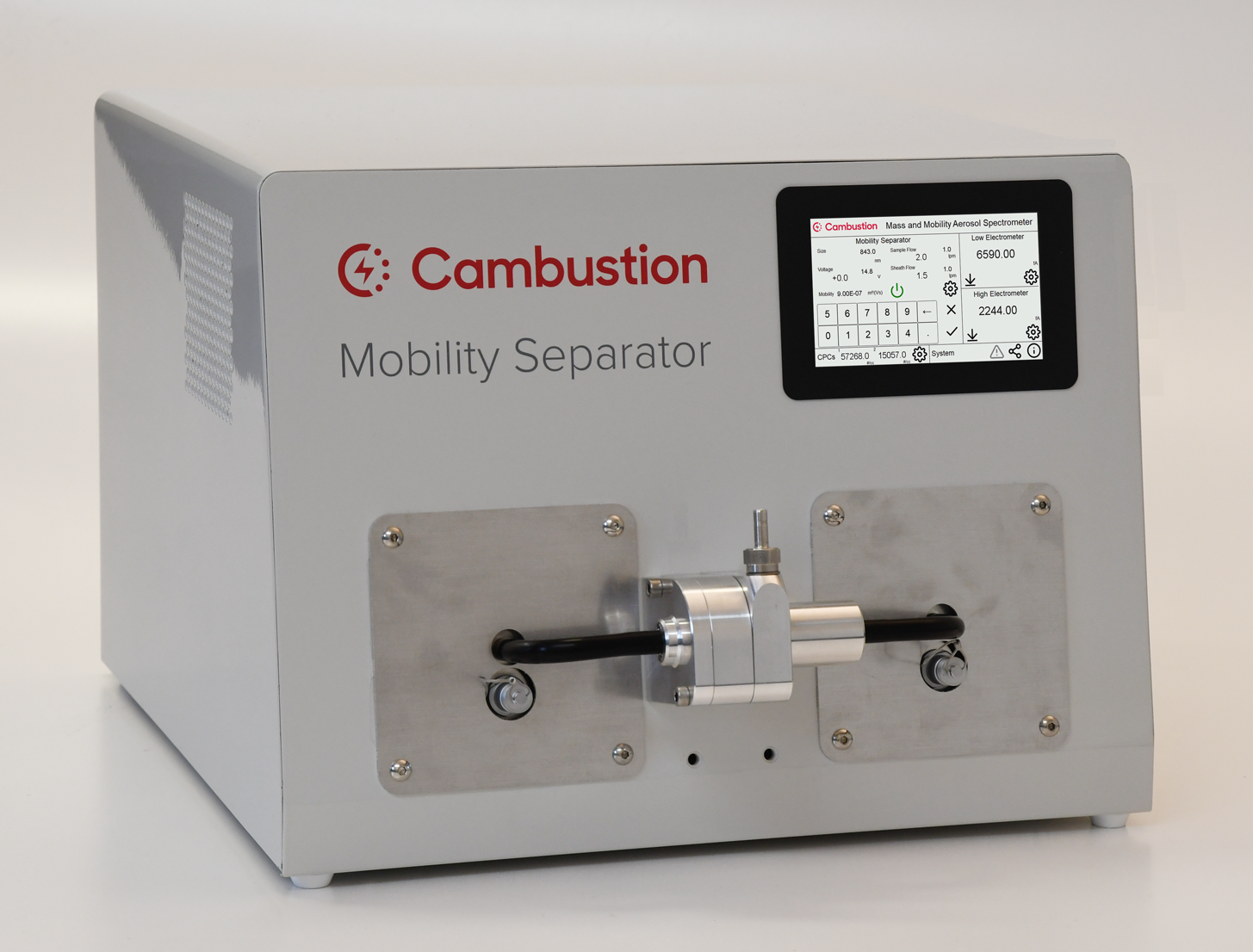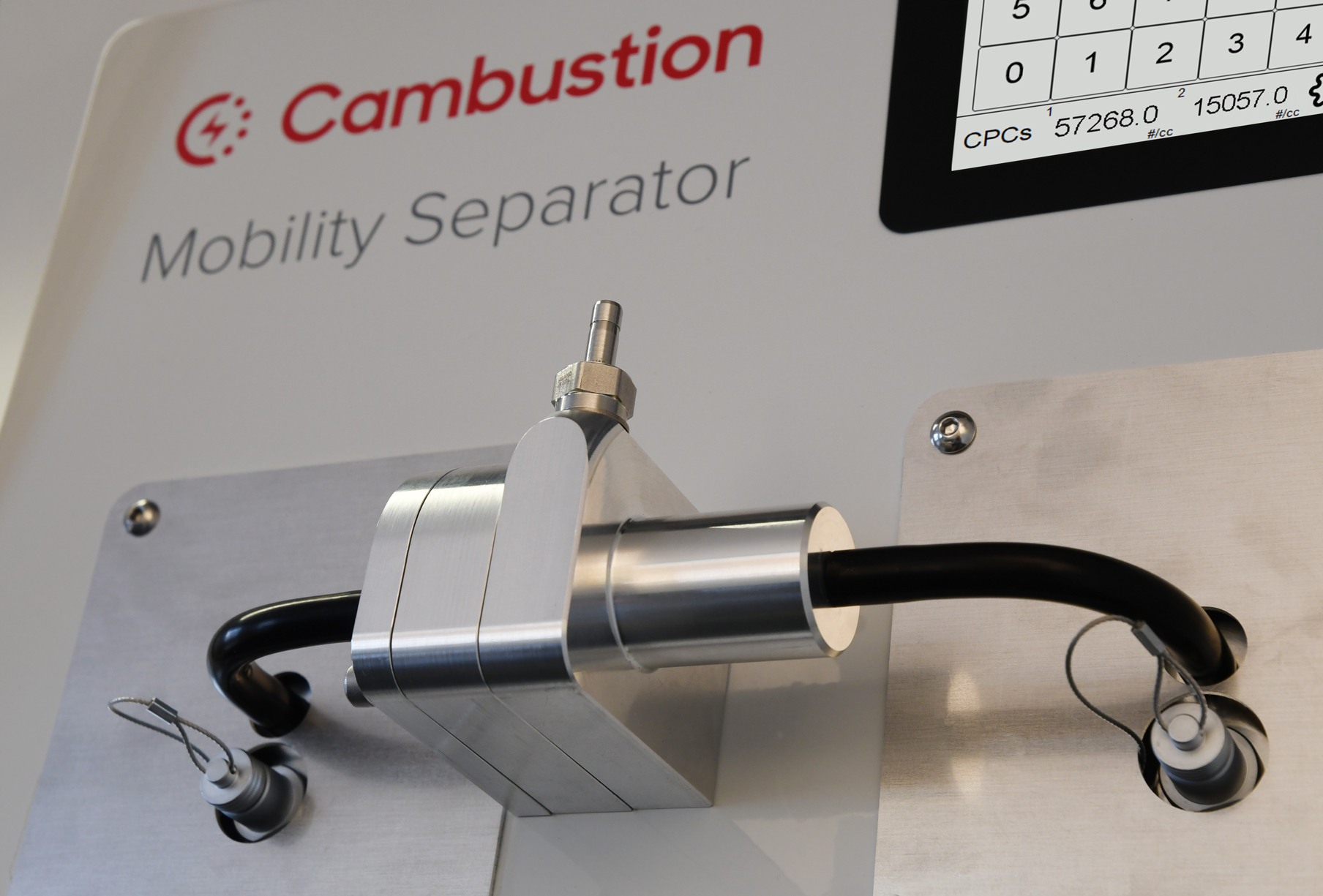Mobility Separator Electrometer
The Mobility Separator Electrometer
The Mobility Separator Electrometer (MSE) uses a sheath flow and a voltage to separate charged particles according to their electrical mobility.
Unlike the Differential Mobility Analyser (DMA), where only particles with the selected mobility pass to the outlet (others being lost inside the instrument) the Mobility Separator passes two streams of particles to separate outlets within the MSE.
The two outlets of high and low mobility particles are connected to two integrated aerosol electrometers, which measure the current caused by charged particles arriving via each outlet.
Automatic adjustment of the mobility setpoint to achieve equal currents on the two the electrometers allows the Mobility Separator Electrometer to identify the mobility of the aerosol.
Applications
MSE applications fall into two groups:
Tandem DMA Experiments
The use of a Mobility Separator Electrometer can vastly shorten the time taken to perform traditional "tandem DMA" type measurements. By using the MSE downstream of the process which is changing the aerosol (e.g. humidity change when studying aerosol hydroscopicity) users can quickly establish the "new" mobility of the particles without the need for a lengthy scan.
This avoids the need for two scanning instruments in tandem, allowing greatly reduced experiment time (and enabling such measurements on less time-stable aerosols).
Measurement of Particle Morphology, Density & More
The Mass & Mobility Aerosol Spectrometer (M2AS) combines several aerosol instruments into a complete system, allowing easy characterisation of aerosol properties such as particle density, mobility diameter and mass-mobility exponent, even for non-spherical aerosols.
Traditional techniques for measuring these properties work well with spherical aerosols, but are less accurate and can be slow for agglomerate / highly fractal aerosols such as Carbon Black, graphitic carbon and other manufactured nanomaterials where complex properties such as surface area, effective density etc. are of great importance.
Mobility Separator Electrometer Brochure
Download a brochure, or contact Cambustion for further information and prices.
Need more information? Connect to an expert

